The modern indicator has become ubiquitous. Despite that technical-sounding name, let's face the facts, an indicator is little more than a bobber. You can call it an indicator, a flotation device, or a nymph suspender. Hell, you can call it Suzanne for all I care. But, in the end, it's just a bobber—just like the one you had on the Barbie pole that you took fishing for bluegills when you were six. Not that there's anything wrong with that, let's just be honest with ourselves. If you want to successfully nymph and don’t have the patience to learn to tight-line, these little floating delights will serve as your window to the underwater world and help you “see” when trout eat your bugs.
Let’s break down a bunch of modern indicators, look at some of the pros and cons of each and dissect when and where you should be using them.

The Thingamabobber
It's probably the most popular indicator out there today. It was the first truly closed celled balloon type indicator on the market. Thingamabobbers come in four different sizes and multiple colors to match any angling situation.
Smaller 1/2" sizes are best for most trout streams. Move up to the larger 1" and 1 1/2" ones for bigger water and heavier nymphs (e.g. when dredging egg patterns and 3 lbs of lead for Great Lakes steelhead).
Pros
Good buoyancy
Easy to See
Multiple colors and sizes
Cons
Relatively hard to adjust its placement on leader
They tend to slide on thinner sections of tippet
Kinks the leader
Hard to turn over in windy conditions
Hits the water hard
Hard to lift off the water
Best For
Faster, broken water and heavy nymphs, fishing from a drift boat.
Air-Locks
Introduced several years ago, the Air-Lock indicator (pictured at top) improves on the Thingamabobber through its use of a plastic nut to attach to the leader. This allows for quick and easy adjustment of its placement on the leader: just loosen the nut and slide it up or down to your desired location depending on water depth. You can also thread the leader through the nut to achieve a true “90-degree” bend in the leader.
Pros
Good buoyancy
Easy to See
Holds fast to leader regardless of tippet diameter
Multiple colors and sizes
Easy to adjust placement on leader
Won’t kink the leader
Cons
Easy to lose the nut or washer that locks it down
Hard to turn over in windy conditions
Hits the water hard
Hard to lift off the water
Best For
Faster, broken water and heavy nymphs, fishing from a drift boat.

Pinch On’s/Palsas/Midgicators
The good old sticker. I have to confess, I love these things, although I feel my carbon footprint is the size of Rhode Island due to the amount of them I burn through. Easy to cast, they land softly and you can use two of them in tandem to create a “line” in your indicator to determine the angle and position of your flies. These are my favorite for low and slow water and for nymphing with smaller, lighter flies.
Pros
Multiple colors and sizes
Won’t kink the leader
Lands softly
Easy to cast and turn over
Cons
One trick pony, once it’s used it trashed - you’ll need a new one if you need to adjust its placement on the leader
They can leave a sticky residue on your leader that will drive you nuts if you suffer from OCD like I do
They can be hard to see in faster more broken water because of their size and tendency to ride a bit lower in the water
Best for
Shallow riffles and skinny water with lighter and smaller nymphs.

The football/rubber band job/toothpick situation
These football-shaped indicators are what you probably first reached for back in ’97 when you started swinging the fly rod. Nothing fancy here, just small pieces of slotted colored Styrofoam. They attach to the leader via rubber band or toothpick, easy enough to adjust placement these lil’ fellas on your leader.
Pros
Just about every gas station, diner and flophouse in Oswego County sells them
Easy to See
Multiple colors and sizes
Easy to adjust placement on leader (for the most part)
You can use the toothpick for getting that jerky from between your molars
Cons
Hits the water hard
Hard to pick up off the water
The rubber band/toothpicky thingy will eventually get lost or break
Best for
Faster, more broken water and heavier nymphs, fishing from a drift boat.

Yarns/New Zealand style
These are my go-to indicator for gin clear water and super spooky fish, much like the where the New Zealand-style indicators were developed—on the crystal clear rivers and streams of New Zealand where the trout spook when you step off the plane in Christchurch. Super light and super easy to cast, yarn indicators are a must for skittish trout because they lay down on the water like a whisper.
Pro tip: Green Mucilin works wonders on yarn indicators and will give you street cred with the bamboo and tweed crowd when you pull it out of your fancy new sling pack.
Pros
Easy to See
Multiple colors and sizes
Easy turnover and pickup
Lays down quietly on water
Cons
Need to dress them with floatant
Can get dragged down in faster currents
Best for
Clear, skinny water, small to medium weighted nymphs and high strung trout.

Pinch on Indicator Putty
Loon Outdoors produces its very popular Biostrike floating putty, a great alternative to carrying multiple sizes of indicators as you can adjust the size and amount of putty for the perfect size indicator. One of the most useful putty colors is the glow-in-the-dark for when you are night fishing with dry flies or nymphs. Often you have to guess when fish take in the dark but using a small dab of bio-glow a few feet above your fly will give you a visual cue without adding a lot of weight to your leader.
Pros
Easy to See
Multiple colors and infinitely adjustable sizes
Easy to adjust placement on leader
Won’t kink your leader
Biodegradable
Cons
Tends to fall off on occasion, especially if a big dumb stocky tries to eat it
Not super buoyant and can get dragged down in faster currents
A bit heavy and hard to turn over large amounts
Can leave a sticky residue on leader and fingers
Best for
Small to medium nymphs in slower currents, riffles and runs, night fishing.
Notes on color selection and setup
Almost all indicators come in a wide range of colors. I generally carry multiple colors and base my decision on time of day and clarity of the water. White and clear indicators are generally your best choice as they blend into bubble lines and are less likely to spook trout. Use brighter indicator colors depending on sun glare and how fast the water is moving. If you can’t see it, what’s the point?
Generally, your indicator should be placed approximately one and a half times the depth of the water up your leader from the bottom fly. So, if you’re fishing a run around three feet deep, place your indicator around four and a half feet up from your fly. A common mistake I see a lot of people make is placing the indicator much too far up the leader. This not only results in your nymph likely drifting where you don’t intend it to, but also causes more of a delay in transmitting the take to the indicator and you missing more hooksets.

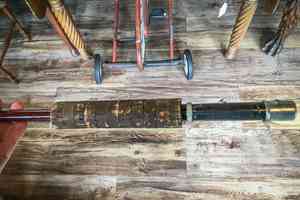
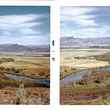

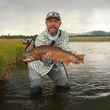

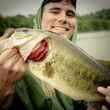
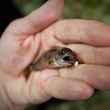



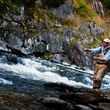





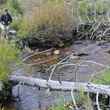



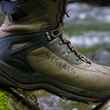





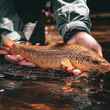
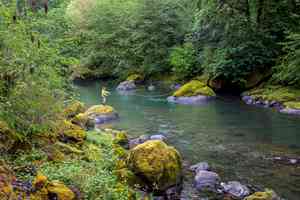
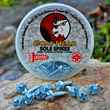

Comments
Albert replied on Permalink
Hi
About this one :skips-turn-on-indicator ??
Steve Bossi replied on Permalink
Know your indicator - Just read your article and liked it. In the interest of full disclosure I am developing and have Patents on new indicator which, if I can ever get the darn thing produced, should be one of the top if not the top indicator available today (or tomorrow or whenever in the heck I can get the thing to market).
In my opinion there are or should be two functions served by an indicator. Obviously it should let the angler know when a fish eats their flies. However, if one agrees that a critical component of indicator (bobber) fishing is getting a good drift then the indicator must provide that information. You talk about the 90 degree connection but didn't expand on why that is important or how it relates to what the indicator "tells" us. In my opinion, with the possible exception of the New Zealand indicator - I have not fished them yet, all the indicators in the article provide virtually no "drift" feedback. Spheres, footballs, stick-on, and putty just float and provide no direct indication of where the heck the angler's flies are. Clearly I believe my indicator will provide all the Pros in your article and address all the Cons and very importantly add the critical benefit of instant drift feedback. Hopefully your next article will include my indicator. It would be an honor to be included. Now I just need to get it produced. HELP
Thom replied on Permalink
Nice article, but you left out my go-to "bobber" - the Float Master!
Fred Rickson replied on Permalink
Much easier: grab a piece of dry stick, tie on leader with an improved granny knot (one on top of the other), when the stick goes under set hook, play fish...no talent needed.
Joe Pratt replied on Permalink
Great info. You suggest that color matters in order to avoid spooking fish (obviously the color matters to the angler for purposes of visibility), but when they're looking up don't they just see a dark silhouette against the sky anyway?
Michael Evanko replied on Permalink
I actually disagree with your assessment that the foam football and rubber band style indicator hits the water hard. Especially on the smaller versions, I don't find this to be an issue. I frequently take off the Airlock and fish the football indicator to have a softer landing. I've watched many trout spook at the Airlock but not at the football style indicator. The only exception might be very spooky wild trout that see every tourist fly fisherman from here to Alaska and only hold in the glass pool. I've found the football style to be the most effective and user friendly indicator available. The problem is you need to watch which brand you buy. You want one that isn't too loose but not too tight. You also didn't address the fact that indicator color can play a role in fish spooking. I go with white almost all the time unless I'm fishing big riffles. I don't think the perfect indicator has been designed yet, but until it is, I'll fish foam footballs!
Art Port replied on Permalink
Actually you WON'T make many cane rod friends with the green mucilin - it has silicone in it and will bollux up any refinishing the rod ever needs. Stick with the RED and you won't get fisheyes in the refinish job.
Art
Don E replied on Permalink
You left out one indicator which is very important, particularly on lakes. The slip-strike indicator. Similar to the foam football/toothpick but a little different. The leader passes through a hole in the indicator, then you make a small loop and hold it in place with piece of toothpick. When a fish is hooked, the indicator releases, and slips down the leader. It’s easily adjustable for depth, and most importantly, you can fish 15 to 20 ft deep (or more), and because it releases does not impair your ability to land a fish because of the indicator not going through the guides. Probably the only indicator you need on still waters.
Pages